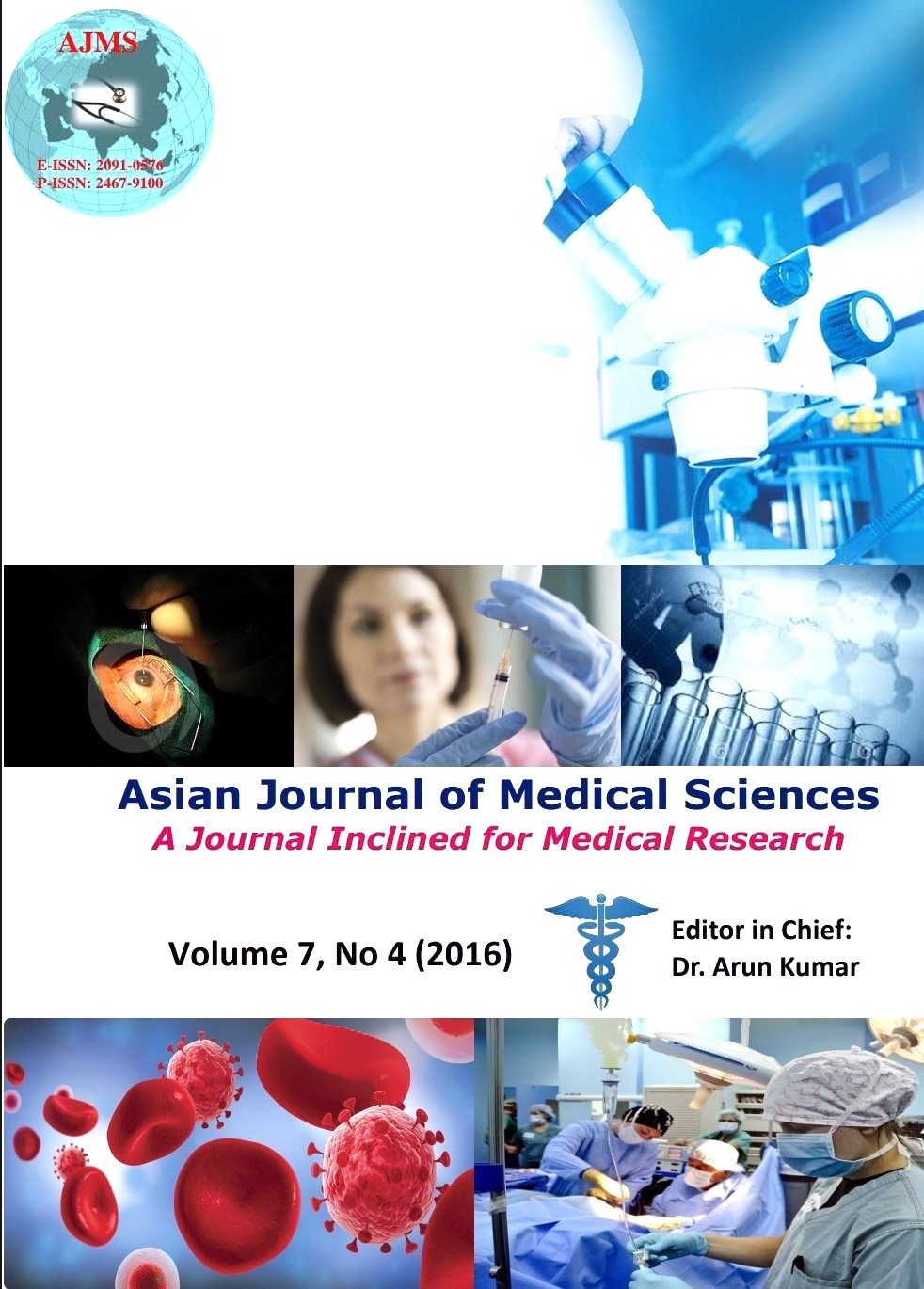Correlation of umbilical blood pH and outcome in meconium stained deliveries
Keywords:
Apgar, Meconium, Newborn, Cord blood pHAbstract
Background: Umbilical cord blood analysis is assumed to give a picture of acid base balance of the infant at the moment of birth when umbilical circulation is arrested by clamping of the cord. Meconium stained deliveries often cause anxiety in the minds of clinicians attending such newborn.
Aims and Objectives: To study the correlation of umbilical cord pH with apgar and outcome and predict a model to help us to detect cases of meconium that need active monitoring and intervention.
Materials and Methods: This was a prospective observational study.86 newborn born to mothers with meconium at artificial rupture of membranes was enrolled for the study All newborn had arterial blood gas analysis from umbilical cord.
Results: The pH of umbilical blood showed positive correlation with apgar scores at 1minute (r=0.46) and negative correlation with thick meconium(r=-0.35) and outcome (r=0.36).
Conclusion: The correlation though not strong are suggestive of the fact that meconium deliveries with poor apgar and thick meconium should be monitored before discharge.
Asian Journal of Medical Sciences Vol.7(4) 2016 113-115
Downloads
Downloads
Additional Files
Published
How to Cite
Issue
Section
License
Authors who publish with this journal agree to the following terms:
- The journal holds copyright and publishes the work under a Creative Commons CC-BY-NC license that permits use, distribution and reprduction in any medium, provided the original work is properly cited and is not used for commercial purposes. The journal should be recognised as the original publisher of this work.
- Authors are able to enter into separate, additional contractual arrangements for the non-exclusive distribution of the journal's published version of the work (e.g., post it to an institutional repository or publish it in a book), with an acknowledgement of its initial publication in this journal.
- Authors are permitted and encouraged to post their work online (e.g., in institutional repositories or on their website) prior to and during the submission process, as it can lead to productive exchanges, as well as earlier and greater citation of published work (See The Effect of Open Access).




